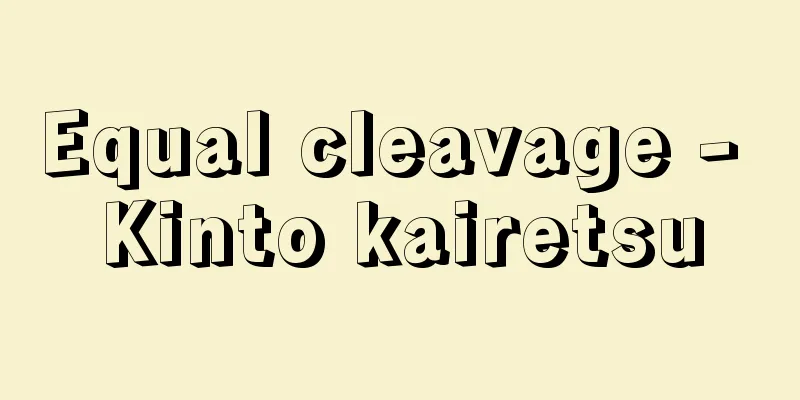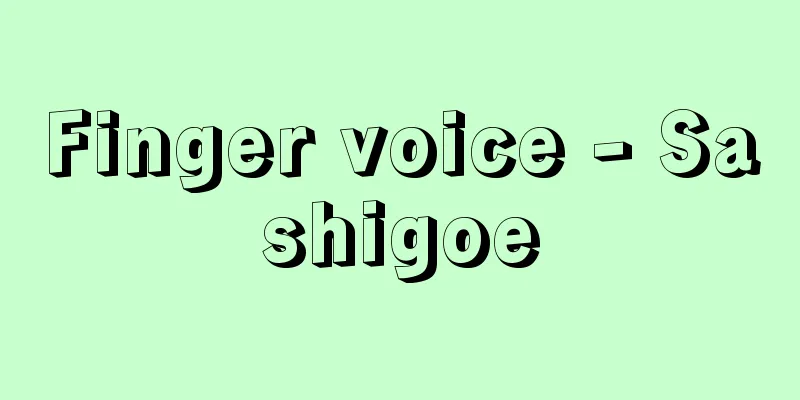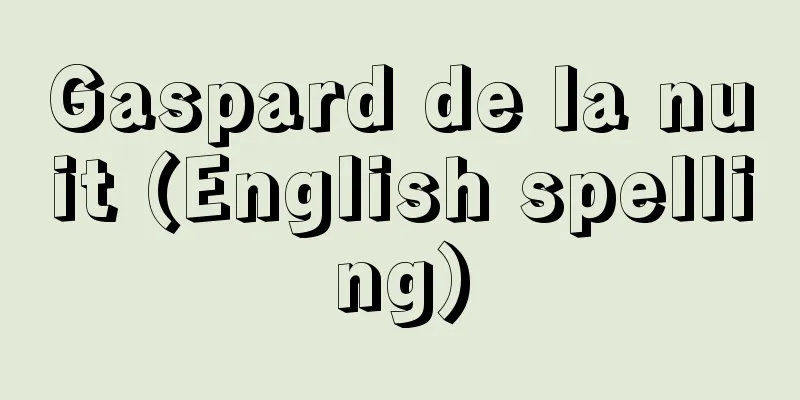Caricature - Caricature (English spelling)

|
It is translated as caricature, cartoon, or comic, but the meanings it contains are diverse and depend on the nature of the work. The original meaning is the Italian word caricatura, which means "something exaggerated" or "something distorted," and has a strong connotation of caricature or caricature. Therefore, it does not include simple cartoons. Humans are naturally unable to tolerate the irrational or incomprehensible and have a tendency to criticize, and caricature is born when this is expressed as a kind of laughter. It does not necessarily take the form of a direct attack on the subject, and metaphors or allegories are often used. Even in such cases, a specific subject must be set as a requirement for caricature. Laughter at an unobjective subject cannot be called caricature, no matter how delightful it may be. The word caricature is also widely used in the realms of literature and thought, and Rabelais's "Gargantua-Pantagruel" and Cervantes' "Don Quixote" are said to be masterpieces of this type. In the field of art, caricature has existed as a pictorial form since ancient times, and its antecedents can be found in the Egyptian animal paintings on stone chips and papyrus. The circulated caricatures of the Middle Ages exposing the hypocrisy of the Catholic Church in selling indulgences can be considered examples of caricature. During the Renaissance, artists such as Pisanello and Leonardo da Vinci produced caricatures based on humanist ideas, while Scandinavian artists such as Dürer, Holbein, Bosch, and Bruegel produced more concrete works, forming the prototype of modern caricature. This trend developed into the outstanding works of artists such as Caro, Piranesi, Hogarth, Rowlandson, and Goya. In the 19th century, with the spread of newspapers, artists such as Daumier and Paul Gavarni who devoted themselves to caricature appeared, and the field expanded further, laying the foundation for the modern-day flourishing of caricature, represented by artists such as Picasso, Grosse, Ensor, and Otto Dix. In Japan, starting with the Kamakura period's Choju Jinbutsu Giga, the Edo period's Tobae, and the works of Katsushika Hokusai, Utagawa Kuniyoshi, Watanabe Kazan and others, caricature has a considerable place in the history of art. Hokusai's Hokusai Manga in particular has received the highest international acclaim. [Shinichi Segi] [References] |Source: Shogakukan Encyclopedia Nipponica About Encyclopedia Nipponica Information | Legend |
|
風刺画、戯画、漫画などと訳されるが、それが含む意味は多様で、その作品の帯びる性質による。本来の意味は、イタリア語のcaricatura、すなわち「誇張されたもの」「歪曲(わいきょく)されたもの」であり、風刺画あるいは戯画の意味合いを強くもつ。したがって、単純な漫画は含まれない。 人間には生来、不合理なものや不可解なものに耐えられず、批判しようとする精神があり、それを一種の笑いとして表現する場合にカリカチュアが生まれる。それはかならずしも対象を直接的に攻撃する形をとらないこともあり、比喩(ひゆ)や寓意(ぐうい)を借りることも少なくない。その場合でも、特定の対象が設定されていることがカリカチュアの要件である。無対象の笑いは、どれほど痛快であってもカリカチュアとはいえない。カリカチュアということばは、広く文学や思想の領域でも用いられ、ラブレーの『ガルガンチュワ‐パンタグリュエル物語』やセルバンテスの『ドン・キホーテ』はその種の傑作といわれている。 美術の分野では、古くから一つの絵画形式として存在しており、エジプトの石片やパピルスに描かれた動物画に先例が求められる。中世に、免罪符を売るカトリック教会の偽善性を暴露した戯画が流布されたのは、カリカチュアの実例と考えることができる。 ルネサンス期になると、ピサネッロやレオナルド・ダ・ビンチが人文主義的思想に立脚した戯画を描き、また、北欧の画家たち、デューラー、ホルバイン、ボス、ブリューゲルらにより具象的な作例が現れて、近代的なカリカチュアの祖型が形づくられた。この流れが発展したところに、カロ、ピラネージ、ホガース、ローランドソン、ゴヤらの優れた作品が生まれた。19世紀に入ると、新聞の普及によって、ドーミエやポール・ガバルニのようなカリカチュアに専念する画家が現れて、分野はいっそう広がり、ピカソ、グロッス、アンソール、オットー・ディックスらを代表とする現代における隆盛の基盤をつくった。 日本でも鎌倉期の『鳥獣人物戯画』をはじめとして、江戸時代には鳥羽絵(とばえ)、そして葛飾北斎(かつしかほくさい)、歌川国芳(くによし)、渡辺崋山(かざん)などの諸作品を生み、カリカチュア史上、相当な位置を占めている。とくに北斎の『北斎漫画』の国際的評価は最高である。 [瀬木慎一] [参照項目] |出典 小学館 日本大百科全書(ニッポニカ)日本大百科全書(ニッポニカ)について 情報 | 凡例 |
Recommend
Picture book book set - Ehonbanzuke
〘 noun 〙 A small booklet of theatrical rankings. T...
Nicobar Islands - Nicobar
Located in the southeastern Bay of Bengal, about 1...
Kalash - Kalash
…They are often made of ceramics or metal, but th...
Gil, A. (English spelling) GilA
...The band visited Japan several times between 1...
Ryushi's New Theory
A representative work by Yamagata Tainii, a think...
Huang Jian
Korean author. His real name is Jae Geon. He was b...
Stock - Turnip
[1] 〘 noun 〙① The base of a plant. (i) The trunk o...
Credit Foncier de France
A French real estate credit bank founded in 1852. ...
Angelfish - Angelfish (English spelling)
A freshwater fish belonging to the Cichlidae fami...
pittura metafisica (English spelling) pitturametafisica
…the translation of the Italian pittura metafisic...
Whiskers - Hossu
A Buddhist implement made of a bundle of animal h...
Official shooter - Kanuchi
It refers to when an official position becomes too...
Sobornost' (English spelling)
It refers to the theological ideas seen in 19th ce...
Minthea rugicollis (English spelling) Minthearugicollis
...The adults and larvae of the oak flat-headed b...
Kamsakkashi - Kamsakkashi
…During his Siberian expedition from 1733 to 1736...









![Ibara [city] - Ibara](/upload/images/67caf0fb7ab24.webp)